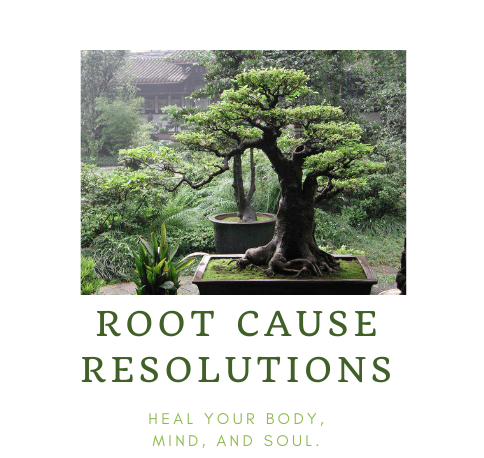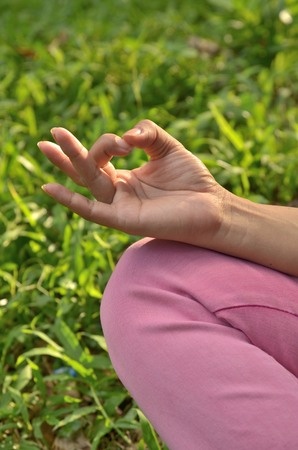Mindfulness is the practice of intentionally bringing your attention to your here and now experiences with an attitude of curiosity, openness and non-judgment. Many studies have shown that mindfulness practices can help you to reduce stress, worry, symptoms of binge eating, many anxiety disorders and ADHD.1, 2
Mindfulness practices, including yoga, yoga breathing exercises and qi gong, can also help you to enhance your emotional well-being, immune system , concentration and focus as well as help you to reduce symptoms of depression, reduce your blood pressure and trigger your “rest, digest and heal” response (i.e., it activates your body’s parasympathetic nervous system).3, 4, 5, 6,7,8,9
While establishing a formal practice for mindfulness meditation is ideal, using informal practices and learning yoga or qi gong is simple and equally as effective. Below are simple, informal practices that you can learn to help you disengage, reduce stress and enhance your well-being.
- Notice Sounds: Notice 5 sounds. As you notice the sounds, be aware of the moment when your mind identifies the sound and adds a label or judgment. It is in the nature of the mind to identify, categorize, label and judge every experience you bring your attention to. With practice, you will simply notice the sounds and be in the spaciousness of your awareness before your mind adds a label or judgment.
- Mindful Breathing: Take 10 mindful breathes. Pay attention to every sensation in your body as you inhale and exhale. The rise and fall of your chest or abdomen. The rate and depth of each breath. The cool sensations as you inhale through your nostrils and the warmth as you exhale out your mouth. The expansion and collapse of your lungs as the air flows in and out of your body. Take time throughout your day to disengage from the task at hand, pause and take 10 mindful breaths.
- Mindful Eating: Notice the colors and shapes. Notice the smells of the food. As you bring the food to your mouth, notice the intention to eat and your body’s production of saliva in the anticipation of the food entering your mouth. As you chew, notice the sounds of the food and the chomping of your teeth that the chewing produces. Notice the feel and texture of the food. Your tongue positions the food precisely where it needs to be in order to chew. Notice the taste. Be aware of the moment and intention to swallow the food.
- Mindful Touch: Touch a loved one or practice self-massage. As you pay attention, notice all the sensations on your skin. Tingling, warmth, coolness, itching, pain, tension, pleasure, lightness. Be aware of any judgments or stories that your mind adds to the experience as you touch. It is natural for your mind to add judgments and preferences about yourself and others. Without struggling, simply notice the judgments, and gently bring your awareness back to the sensations in your body.
- Mindful Walking: Walking is a controlled act of falling. When you walk mindfully, have the intention of noticing every aspect of your body as you raise your foot to take a step. Monitor the sway of your hips. Notice the tension in your calf as you raise your foot, the pull in your thigh and the pressure upon landing on your heel. Alternate and again monitor the movement of your body as you lift the opposite foot. Be aware of the movement of your shoulders, hips and arms as you balance yourself to walk. As your mind wanders, gently redirect your attention back to your breath and the movements of your body. To help you maintain your focus, you may want to mentally label each step. “Left, Right, Left, Right.”
- Alternate Nostril Breathing (Yoga breathing exercise): Close your right nostril with your right thumb and inhale through your left nostril. Do this for a count of four seconds. Immediately afterwards close your left nostril with your right ring finger and little finger while you simultaneously removing your thumb from your right nostril and exhale through this nostril. Do this for a count of eight seconds. Complete your cycle by inhaling through your right nostril for a count of four second and follow by closing your right nostril with your right thumb and exhale through your left nostril for a count of eight seconds. Start by doing three cycles, adding one per week until you are doing seven cycles.
To your health and success,
Dr. Sandoval
To learn more about how working with a psychologist and holistic health coach can help you to enhance your health and well-being, call or email Dr. Sandoval to schedule a free consultation.
- Klein, AS, Skinner, JB and Hawley, KM. “Targeting binge eating through components of dialectical behavior therapy: Preliminary outcomes for individually supported diary card self-monitoring versus group-based DBT.” Psychotherapy. (2013). 50(4), 543-552.
- van de Weijer-Bergsma, E, Formsma, AR, Bruin, EI, Bögels, SM. “The effectiveness of mindfulness training on behavioral problems and attentional functioning in adolescents with ADHD.” Journal of Child and Family Studies. (2012). 21(5), 775-787.
- Witek-Janusek, L, Albuquerque, K, Chroniak, KR, Chroniak, C, Durazo-Arvizu, R, Mathews, HL. “Effect of mindfulness based stress reduction on immune function, quality of life and coping in women newly diagnosed with early stage breast cancer.” Brain, Behavior, and Immunity, (2008). 22(6), 969-981.
- Sarang, P and Telles, S. “Effects of two yoga based relaxation techniques on heart rate variability (HRV).” International Journal of Stress Management. (2006). 13(4), 460-475.
- Vempati, RP and Telles, S. “Yoga-Based Guided Relaxation Reduces Sympathetic Activity Judged from Baseline Levels.” Psychological Reports. (2002). (90), 2 487-494.
- Srivastava, RD, Jain, N, and Singhal, A. “Influence of Alternate Nostril Breathing on Cardiorespiratory and Autonomic Functions in Healthy Young Adults.” Indian Journal Physiology and Pharmacology. (2005). (49), 4, 475–483.
- Subramanya, P and Telles, S. “Effect of two yoga-based relaxation techniques on memory scores and state anxiety” BioPsychoSocial Medicine. (2009). (3), 8.
- Tsang HW, Fung KM, Chan AS, Lee G, Chan F. “Effect of a qi gong exercise program on the elderly with depression.” International Journal of Geriatric Psychiatry. (2006). (21), 9, 890–897.
- Oh, Byeongsang, Sun Mi Choi, Aya Inamori, David S.Rosenthal, and Albert S. Yeung. “Effects of Qi gong on depression: A systemic review.” Evidence-Based Complementary and Alternative Medicine (2013). doi:10.1155/2013/134737
The information, published and/or made available through the www.drjosesandoval.com website, is not intended to replace the services of a physician, nor does it constitute a physician-patient relationship. This blog is for informational purposes only and is not a substitute for professional medical advice. You should not use the information in this post for diagnosing or treating a medical or health condition. You should consult a physician in all matters relating to your health, particularly in respect to any symptoms that may require diagnosis or medical attention. Any action on the reader’s part in response to the information provided in this blog is at the reader’s discretion.

